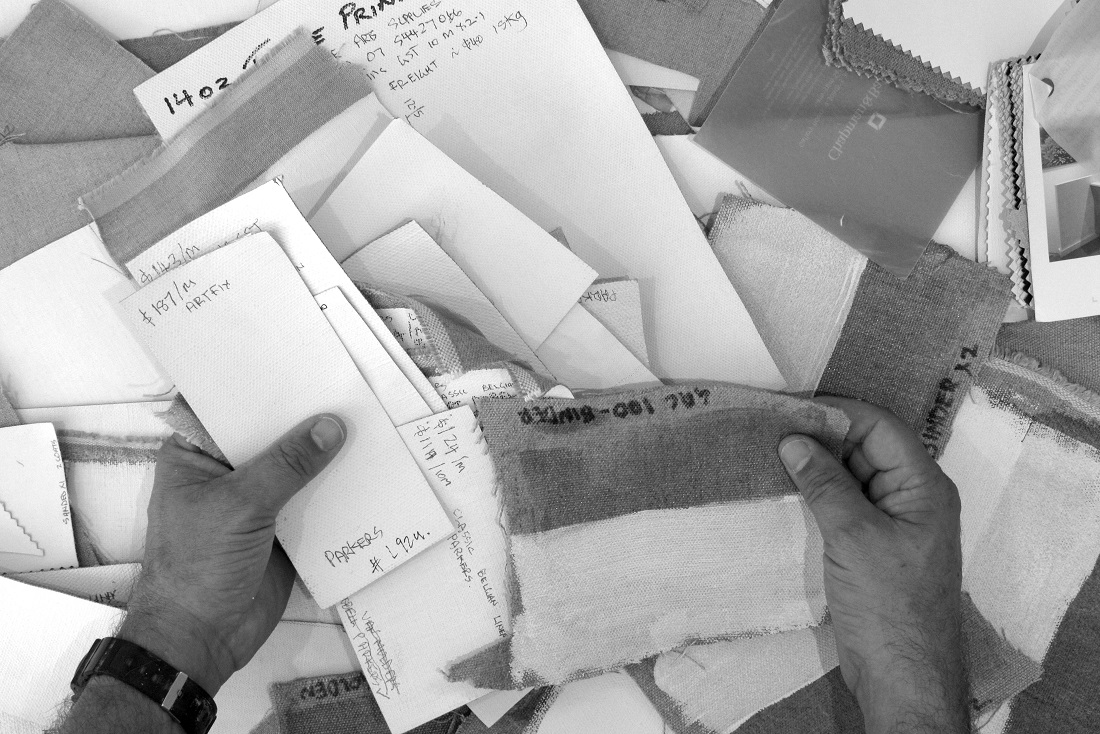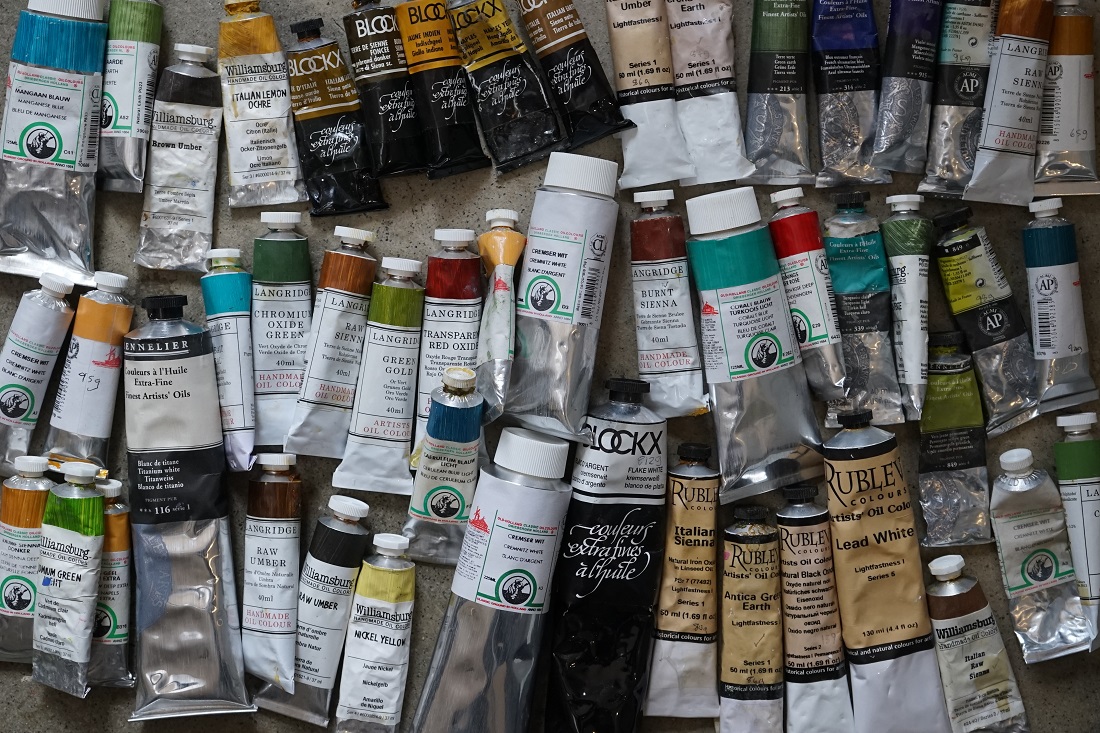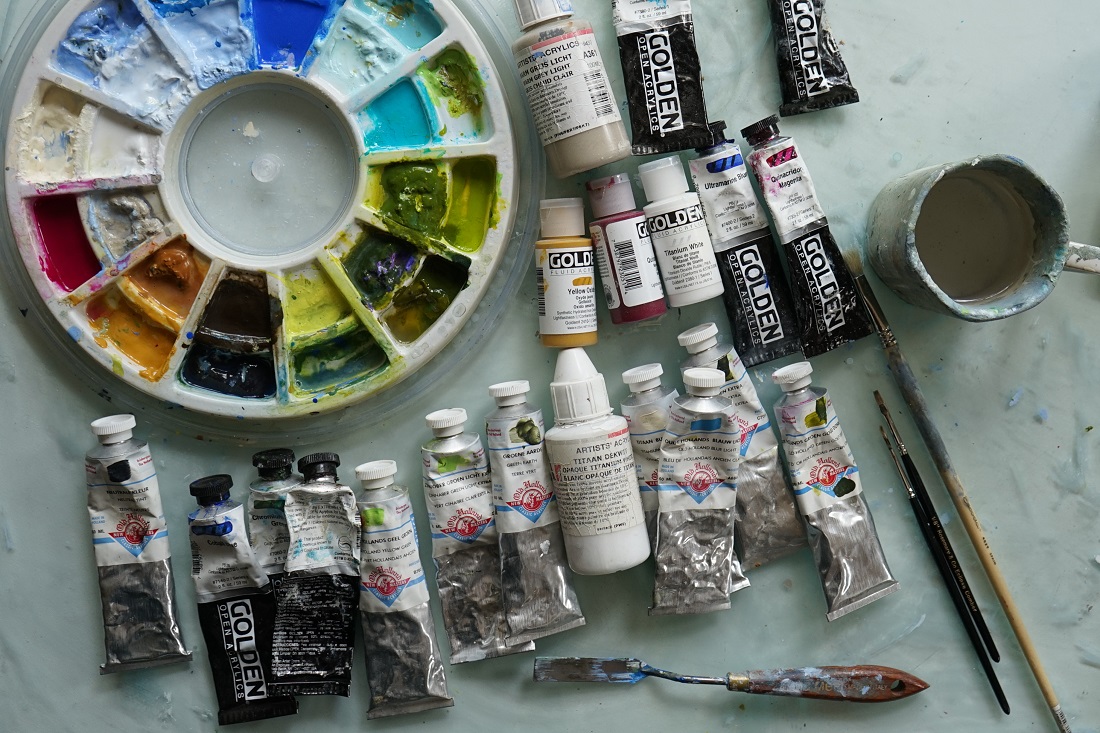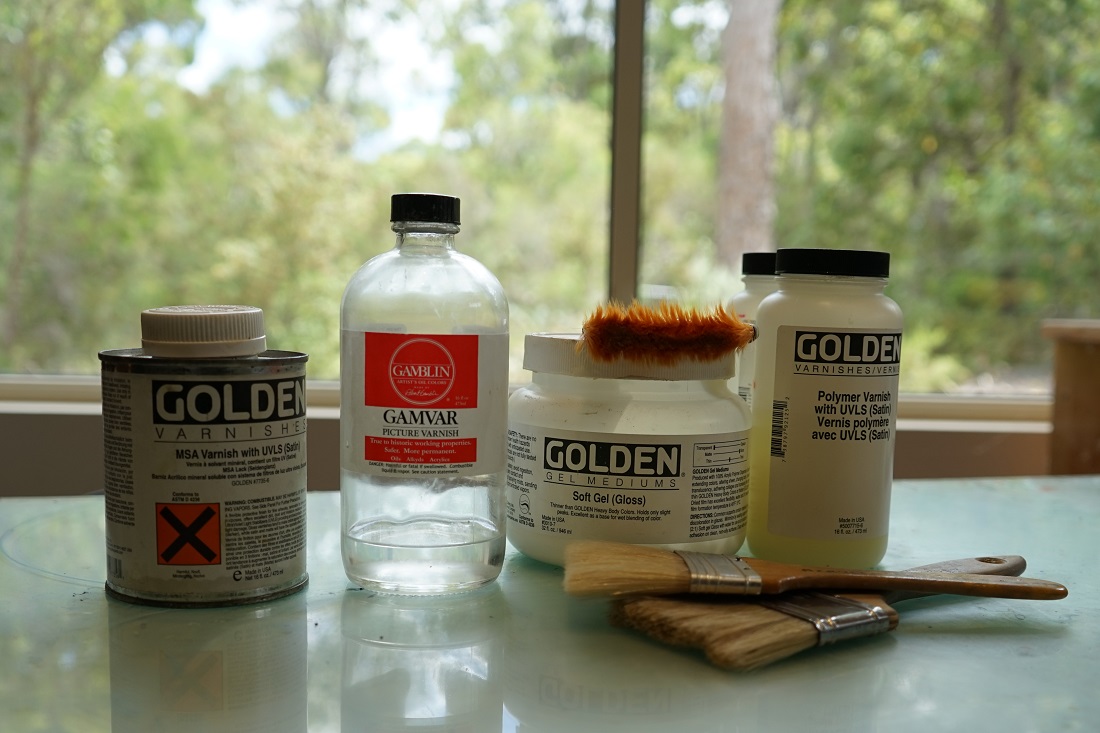The support chosen for my larger paintings is an acrylic primed Belgian linen. The best linen in the world is woven from flax grown in a small area between Normandy and Holland, and has been traditionally done so for about 500 years. Flax linen fibres are far stronger than cotton fibres, due to being 10 to 30 times longer. As a textile support, cotton does not have the strength and durability when compared to linen. The linen used is then coated with 3-4 layers of acrylic gesso.
The smaller paintings are done on Belgian linen adhered to marine ply using a conservation acrylic polymer.
The linen is then stretched on Professional Quality Stretcher Bars, and requires a certain amount of skill and experience, of which I have been doing for over 25 years.
The paints used are either an acrylic emulsion or of a hand made oil. The paint chosen have pigments with the highest light fast rating (being ASTM 1 OR BWS 8:8:8), thereby minimising and negating fading issues. Many of the pigments in the paint are very expensive, but are irreplaceable when compared to many of the cheaper pigments. One such pigment is flake white. Although 5-10 times the price of modern white paints, the importance of flake white is two fold. Besides accelerating the drying rate of the paint film, it creates a stronger crosslink of the oil film and pigment thereby producing a more enduring painting.
After many years of studying master artist paintings, I have been able to incorporate many of their techniques within the repertoire of methods I use. Some of the techniques include glazing , sgraffito, sfumato and botteggiando.
In order to push the boundaries of the technical side of my work, hand made brushes of various fibres (both natural and synthetic) were acquired from overseas due to their unavailability in Australia. These high quality brushes allowed me to manipulate the paint in such a way as to give me either detail or atmosphere to my paintings.
Synthetic and Natural Brushes
For future conservation purposes a non removable isolation coat was applied over the acrylic paint film prior to varnishing. This isolation coat physically separates the paint film from the non yellowing removable varnish. This will help protect the acrylic surface if the varnish is ever removed, making future cleaning and conservation easier. The archival varnish contains Ultra Violet Light Stabilisers to help protect colours from damaging light sources. With my oil paintings, the varnish used was developed by an American company in collaboration with the National Gallery of Art (Washington). It is a non yellowing synthetic varnish readily removed when required.
Varnish for Acrylics and Oils
As a final method to increase the longevity of the painting, the back of the painting is covered with a foam core board and a layer of conservation polypropylene. Environmental fluctuations increase the expansion and contraction of both canvas and paint layers. With oils this can lead to sagging of the linen, paint cracking and finally delamination. This process is greatly reduced by sealing the reverse of paintings.
There are many paintings that have dramatically altered via yellowing and cracking, altering the artists initial intention of what she/he was trying to express. Like many Renaissance artists, I consider the pursuit of permanence in my work an important principal when choosing the correct materials.
I view my paintings as like ‘time capsules’, hopefully to be viewed and felt in a similar manner as the day they were painted, in centuries to come.







